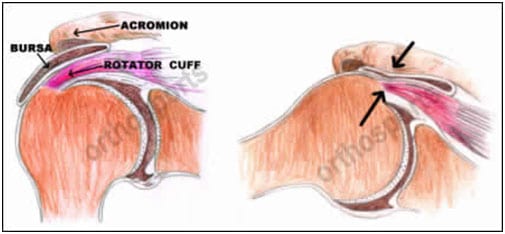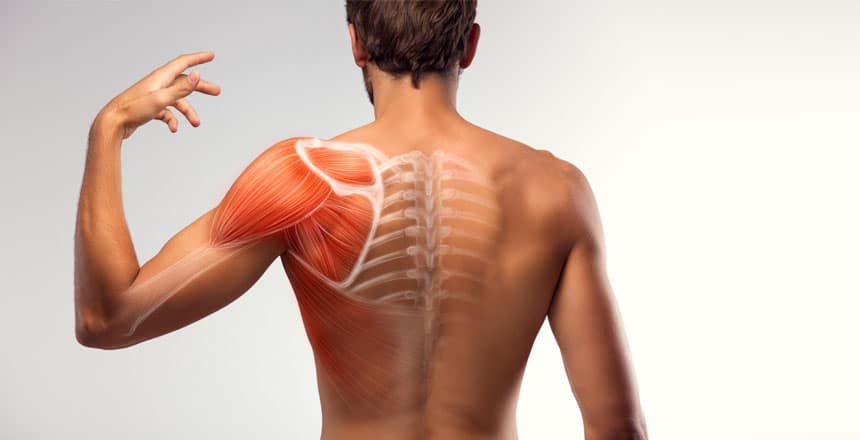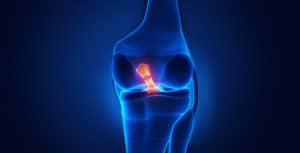What is shoulder impingement?
The most common cause of shoulder pain when lifting your arm above your head is referred to as shoulder impingement. Shoulder impingement can be due to an acute or overuse bursitis or a rotator cuff tendinopathy, or both.
Between the shoulder joint (gleno-humeral joint) and the roof of the shoulder (acromion) is an area called the subacromialspace. Inside this space lie the rotator cuff tendons, the long head of biceps tendon and a bursa known as the subacromial bursa. If there has been injury to the tendons or bursa these structures can become impinged when we lift our arm up due to swelling or inflammation.

What are the signs and symptoms of shoulder impingement?
Who gets shoulder impingement?
What is the physiotherapy management?
Are investigations useful?
How long will it take to resolve?
Physiotherapy is important for obtaining an accurate diagnosis and appropriate treatment for pain free shoulder range of motion and function. Full recovery can take between 3 to 6 months, however a prompt physiotherapy regime can accelerate the process.





